
Legal Department of the Future: The stories behind the statistics
Excluded by definition: the narrow reading of “stepchild” and housing succession claims
Consistency in disciplinary processes
What the Epping Forest injunction case means for local authorities across England
Exclusions – lessons from the last academic year

New statutory guidance on RSHE
Tracking down the abducted ‘P’
What does the law say about hair strand testing?
Document experts in age assessment disputes: Ask the court’s permission, not its forgiveness
Navigating the Provider Selection Regime (Wales) Regulations 2025

Ethics and Integrity Commission: a new chapter in public standards oversight
Allocation of temporary accommodation, transfer lists and discrimination
Instruction of experts in housing disrepair claims
From Wikimedia to the wider web: What the High Court’s judgment means for the Online Safety Act 2023
The Health and Social Care (Wales) Act 2025 – eliminating profit from the care of looked after children
Inability to speak at a planning committee meeting and prejudice
Changes to the subsidy control statutory guidance August 2025
A new planning bill for Wales: What will this mean?
The landfill tax and local authorities
REMA Update: New direction for electricity market reform
FOI is a collateral attack on enforcement
The Legal Department of the Future and the Monitoring Officer
It was Darkest Before The Dawn
In ‘n’ Out – insourcing vs outsourcing
Town and village greens: landowner statements and regulatory failures by the CRA
Supreme Court clarifies cumulative approach to qualified exemptions under FOIA
Ofgem’s energy system cost allocation and recovery review – Proposed reforms and impact assessment
New requirements for Residential PEEPS (Personal Emergency Evacuation Plans)
Beware helpful judges (or Timeo judices et dona ferentes)
The path ahead for social housing
Re-evaluating Birmingham v Lee
Reforming the Right to Buy
The power of local authorities to set local energy efficiency standards
Preparation and conduct of public law children proceedings
The Office for Environmental Protection and local authorities
Flood risk and emerging Local Plans
Disordered eating and the gaps between services – the consequences for the Court of Protection
Mental health tribunals and 11(7) representatives
The Housing Ombudsman on ASB
The role of substitutes
The Cyber Security and Resilience Bill: key considerations
The Pensions Scheme Bill and the LGPS
Reasonable adjustments and the removal of disadvantage
Powering the future: Legal insight on driving demand for hydrogen in the UK
Commercial market operator principle clarified in CAT ruling on subsidy control challenge
Local authority enforcement powers and domestic beekeeping
Dan Jacklin provides a detailed analysis of the enforcement powers available to local authorities in relation to domestic beekeeping.
- Details
The majority of the UK honey bee population are kept in hives as livestock. The average hive can support 35,000-40,000 honey bees during the peak season between May and the end of July, typically between 11 am and 4 pm (BBKA, 2025). There are approximately 47,000 bee keepers registered with BeeBase, the vast majority being hobbyists (BeeBase, 2025).
Keeping honey bees can be a rewarding and enjoyable past time. However, problems can arise when a large number of hives are located on domestic premises within high-density residential areas. Such properties have been known to house as many as 1 million bees (BBC, 2025).
Neighbours of such properties have reported being fearful of using their gardens, particularly when the bees are swarming, having to keep windows shut, pay for the bees' removal from their property, and there have even been reports of tradespeople (such as window cleaners and gardeners) blacklisting addresses because of being attacked by bees (or the fear of such occurring).
There are two major touchpoints between bee keepers and local authorities: (1) planning controls and (2) statutory nuisance controls.
Planning controls
Section 57(1) of the Town and County Planning Act 1990 (‘TCPA 1990’) requires planning permission for any ‘development’ of land. Development is defined by section 55(1) of the TCPA 1990 as being the “means of carrying out of building, engineering, mining or other operations in, on, over, or under land, or the making of any material change in the use of any buildings or land.” Any change in use is deemed to have begun at the time the new use is initiated (section 56(1), TCPA 1990).
The decision in Tandridge District Council v (1) Homewood (2) The Honey Farm (1986) 1 P.A.D. 410 concerned a significant upscaling in the intensity of honey bee farming at the Defendant property.
The Secretary of State found that the manufacturing and sale of honey bees were uses of the land and not ‘operational development’ within the meaning of section 55(1) of the TCPA 1990. Further, the sale of bees bred on the site in hives was not development requiring planning permission. The manufacturing and selling of hives with and without honey bees did not constitute ‘development’ and did not require planning permission. The manufacture of beehives (without bees) from Western Red Cedar trees grown on the site was deemed to be a ‘beneficial activity’ and permission was granted for such development.
It is suggested in Tandridge, that if apiarian products began to be sold or exchanged from a domestic property, this could constitute a material change in the use of the land under section 55(1) of the TCPA 1990. Authorities have plenty of time to take action within the 10 year longstop provided for breaches of planning control under section 171B(3) of the TCPA 1990.
Section 251 notices under the TCPA 1990 are unlikely to provide a viable option as beehives are chattels and so do not form part of the land; a pre-requisite for serving such a notice.
Statutory nuisance
Most bee keeping will not cause problems for other residents in the surrounding area. Where such hives become problematic, local authorities will need to review the relevant enforcement powers available to them.
Authorities have traditionally turned to their powers under section 79 of the Environmental Protection Act 1990 (‘EPA 1990’). Choosing the right part of section 79 to raise any abatement notice is critical.
Section 79(1)(fa) of the EPA 1990 may appear to be the most obvious provision to apply as it applies to insects. However, on closer examination, the provision only applies where insects emanate from “relevant industrial, trade or business premises”. This provision is not, therefore, appropriate for nuisances arising from domestic premises. The situation may be different if apiarian products are being sold from the otherwise domestic premises.
Section 79(1)(a) of the EPA 1990 concerns any premises which are in such a state as to be prejudicial to health or a nuisance. However, for the reasons stated above, beehives are chattels, so the risk to health or nuisance does not arise from the ‘state of the premises’.
Where local authorities have found a suitable power to exercise is under section 79(1)(f) which pertains to any animal kept in such a place or manner as to be prejudicial to health or a nuisance. The term ‘animal’ is not defined by the EPA 1990, but by any ordinary construction would include bees. A more difficult question to answer is whether the bees are ‘kept’ within the meaning of section 79(1)(f) of the EPA 1990. The answer lies in the case law that has arisen around such cases.
Slesser LJ spoke of the ownership of bees as being ratione soli and said “thus a qualified property may be had in the bees in consideration of the property whereon they are found” (Kearry v Pattinson [1939] 1 KB 471 at [479]). The learned judge also said that bees were “farae naturae before being hived but they may be taken into the disposition of the owner per industriam by hiving and so become his property.”
The most recent precedent on the law of property in bees is the decision of Borwick Development Solutions Ltd v Clear Water Fisheries Ltd [2020] EWCA Civ 578 where Sir Timothy Lloyd said that “animals ferae naturae cannot be subject to absolute property rights.
It was said that whilst the bees are on hive owner’s property, his rights of ownership over the bees arises ratione soli, because ownership is both necessary and sufficient as the basis of the asserted right. When the bees leave the hive owner’s property, his rights over the bees per industriam require him to retain possession of the bees. This is clearly impossible to do, so the law has carved out an exception for “roaming animals.”
Sir Timothy Lloyd states that “in roaming animals, what is necessary to show is that they have established a home territory” (Borwick, [42]). Rights per industriam can be asserted provided the bees have an intention to return. However, the swarmed bees are lost if they choose not to return.
Thus bees should be considered as being ‘kept’ when they are on the property of others for the purpose of section 79(1)(f) of the EPA 1990, provided they have an intention to return to the hive.
Typically, the manner or place of the bees keeping is not prejudicial to health, but it can and has been held to constitute a nuisance. Fear of using one’s land because of the presence of a nuisance on neighbouring land has been held to constitute an actionable nuisance (Birmingham Development Co v Tyler [2008] EWCA 859 at [55]).
As Lord Leggett pointed out in the recent decision of the Supreme Court in Fearn and Ors v Board of Trustees of the Tate Gallery [2023] UKSC 4 at [13]:
“Frequently, such interference is caused by something emanating from land occupied by or under the control of the defendant which physically invades the claimant’s land.
[…]
Moreover, there is no requirement that the interference must be caused by a physical invasion.”
Consequently, a local authority is not required to prove that the index bees visited a given property to establish a statutory nuisance.
As to the final two elements to be established, whether the interference is ‘substantial’ and the use of the land ‘unnatural’ is highly fact specific.
Whilst not binding, Judge Campbell in Johnson v Martin [1950] 1 WLUK 177 considered that beekeeping was an ordinary use of the land. The learned judge decided in that case that the keeping of 750,000 bees was not ‘unreasonable’. However, the parties do not appear to have brought to the judge’s attention that a use being ‘unreasonable’ is not a defence to a claim in nuisance (Bamford v Turnley (1862) 3 B&S 62 at [83]).
Further, 1950 was the height of UK beekeeping according to Professor Ollerton’s research, so the decision may well be different today and is always context dependent. As Thesiger LJ famously said:
“What would be a nuisance in Belgrave Square would not necessarily be so in Bermondsey.”
Any previous use of the land for beekeeping is not a defence to a statutory nuisance claim (Lawrence v Feb Tigers Ltd [2014] UKSC 13), nor is that the keeping of bees is of public benefit (Fearn, [121]).
Although many of the nuisance cases fall within the legislation preceding the EPA 1990, it is likely that the keeping of a large number of bees could constitute a statutory nuisance in appropriate cases.
Whilst there is no case law on the point, it may also be possible to use Community Protection Notices under section 43(1) of the Anti-Social Behaviour, Crime and Policing Act 2014, but discussion of those powers will have to wait for another article.
Summary
In summary, local authorities have a range of enforcement powers to ensure domestic bee keeping is responsibly managed and to support them to take action where appropriate.
Dan Jacklin is a barrister at St Philips Chambers.
Solicitor or Chartered Legal Executive
Lawyer - Property
Senior Lawyer - FCRM & Planning Team
Lawyer - Area FCRM and Planning Team
Police Misconduct & Vetting Solicitor
Locums
 Business and Property Masterclass #5: Interim Relief – Acting urgently and getting it right - Cornerstone Barristers
Business and Property Masterclass #5: Interim Relief – Acting urgently and getting it right - Cornerstone Barristers
10-09-2025 11:00 am
Online (live)
 Business and Property Masterclass #6: Rights of Light and Restrictive Covenants - Cornerstone Barristers
Business and Property Masterclass #6: Rights of Light and Restrictive Covenants - Cornerstone Barristers
23-09-2025
Online (live)
 Institutional landlord series: Possession – High Court Enforcement - 5 Pump Court
Institutional landlord series: Possession – High Court Enforcement - 5 Pump Court
22-10-2025 4:00 pm
Online (live)
 Institutional landlord series: Costs Recovery and Legally Aided Parties - 5 Pump Court
Institutional landlord series: Costs Recovery and Legally Aided Parties - 5 Pump Court
05-11-2025 4:00 pm
Online (live)
 HMPL Building Blocks: Tenancy Management – Assignment, Mutual Exchange and Succession - Devonshires
HMPL Building Blocks: Tenancy Management – Assignment, Mutual Exchange and Succession - Devonshires
12-03-2026
Online (live)
 Unpicking the Procurement Act Episode 2: Exclusion and Debarment - 39 Essex Chambers
Unpicking the Procurement Act Episode 2: Exclusion and Debarment - 39 Essex Chambers
On Demand
Online (pre-recorded)
 Unpicking the Procurement Act Episode 1: Overview and New Procedures - 39 Essex Chambers
Unpicking the Procurement Act Episode 1: Overview and New Procedures - 39 Essex Chambers
On Demand
Online (pre-recorded)
 Unpicking the Procurement Act Episode 3: Contract Modification - 39 Essex Chambers
Unpicking the Procurement Act Episode 3: Contract Modification - 39 Essex Chambers
On Demand
Online (pre-recorded)
 Unpicking the Procurement Act Episode 4: Challenges and Remedies - 39 Essex Chambers
Unpicking the Procurement Act Episode 4: Challenges and Remedies - 39 Essex Chambers
On Demand
Online (pre-recorded)
















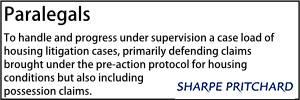




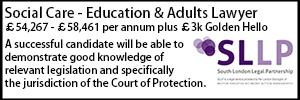




















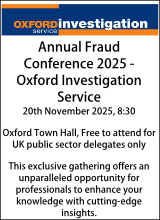

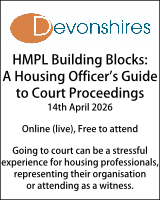
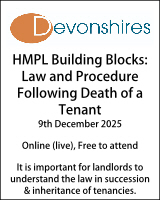




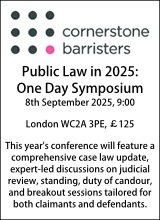

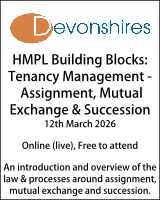
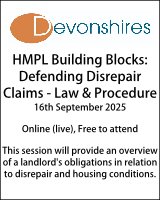
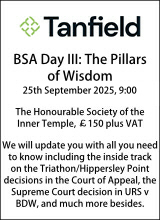
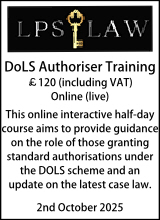
 Executive Programme in Public Procurement Law and Policy - University of Nottingham
Executive Programme in Public Procurement Law and Policy - University of Nottingham  Net Zero Summit - Sharpe Pritchard
Net Zero Summit - Sharpe Pritchard  Property Law Roadshow 2025 - Bristol - St John's Chambers
Property Law Roadshow 2025 - Bristol - St John's Chambers  CUBAS Comprehensive Training & Licencing (Manchester), September 2025
CUBAS Comprehensive Training & Licencing (Manchester), September 2025  AI in the Public Sector Conference - Westminster Insight
AI in the Public Sector Conference - Westminster Insight  Activism in the Workplace - 42BR Barristers Employment Law Annual Lecture
Activism in the Workplace - 42BR Barristers Employment Law Annual Lecture  DoLS Authoriser Training - LPS Law
DoLS Authoriser Training - LPS Law  Property Law Roadshow 2025 - Cardiff - St John's Chambers
Property Law Roadshow 2025 - Cardiff - St John's Chambers  Annual Fraud Conference 2025 - Oxford Investigation Service
Annual Fraud Conference 2025 - Oxford Investigation Service  Ivy Legal - Certificate in Planning Enforcement
Ivy Legal - Certificate in Planning Enforcement